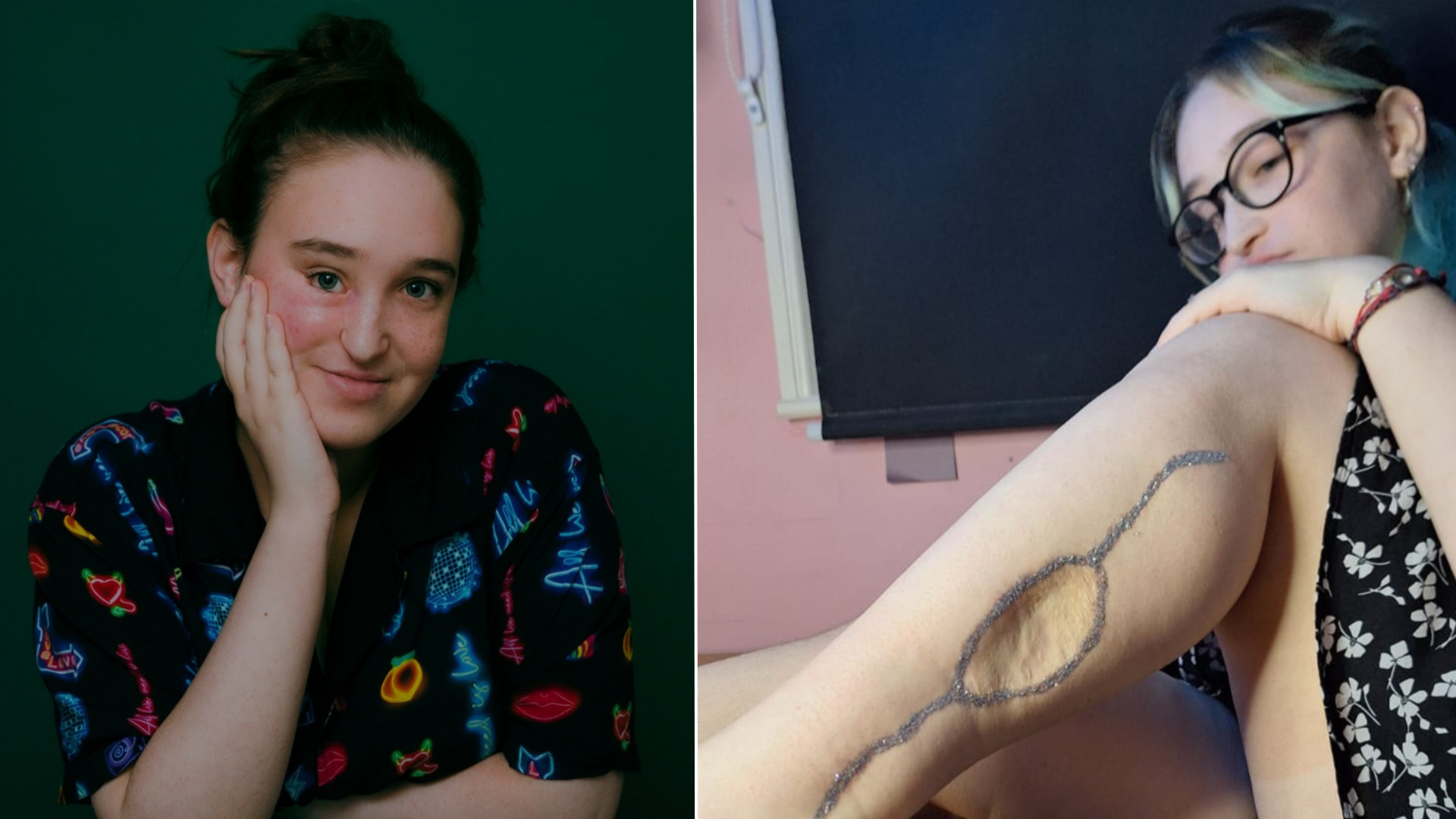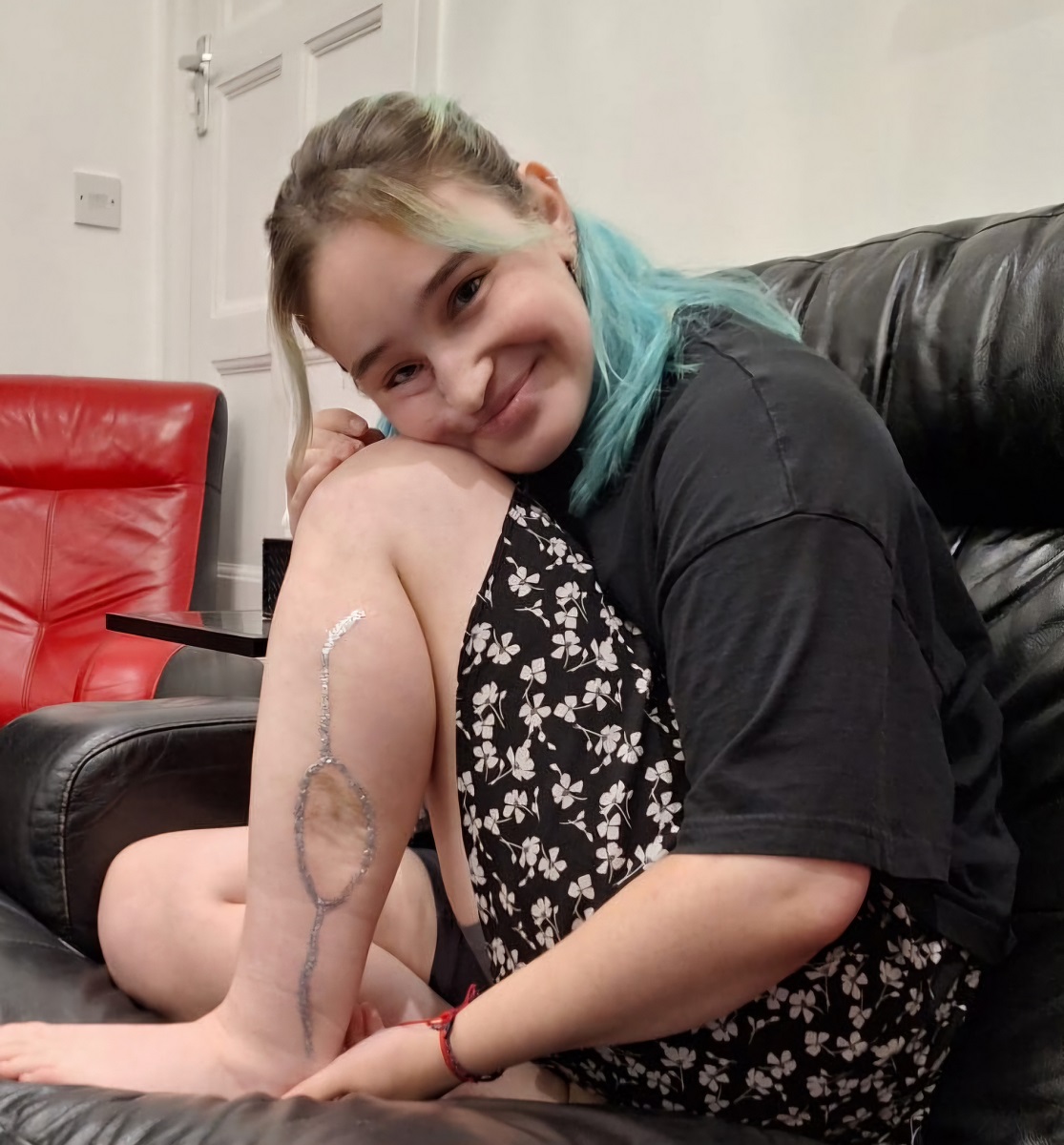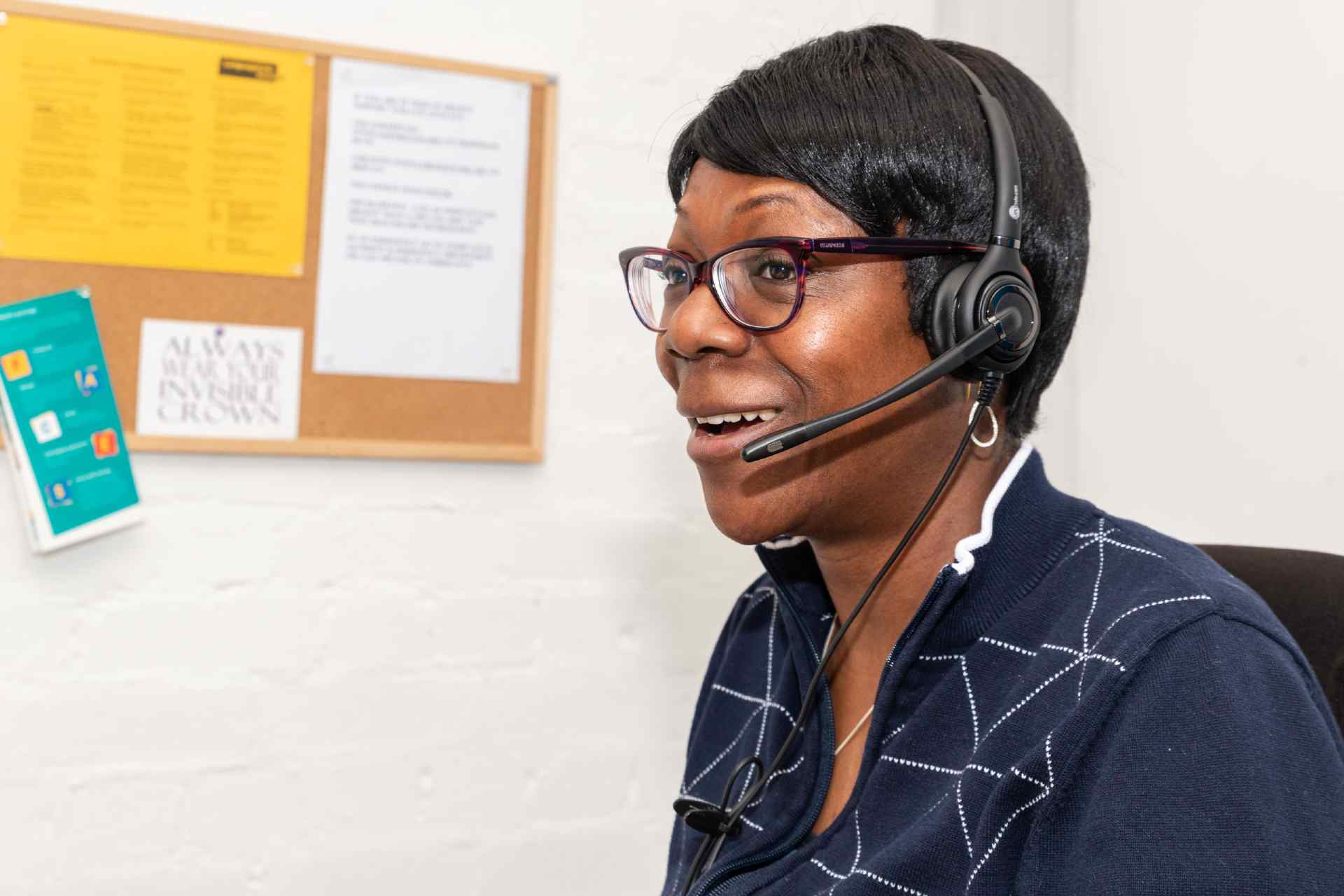What? Do you not bedazzle your scars?!
I vividly remember the first time I saw the new scar on my leg that I acquired after a recent operation. I was lying in the hospital after my operation, still groggy from the anaesthesia and strong pain medication. When I saw the scar, I was shocked by its size. It was much larger than I had thought it would be.
At first, I deeply resented the scar. Having intense physio to help it heal, mixed with the pain and its appearance made me angry. The scar also made me feel ashamed that yet another part of my body had fallen victim to a tumour I had as a kid, and my ‘perfect’ body was out of reach.
Slowly, the scar became a symbol of resilience, a reminder of the strength I didn’t know I had.
However, like with all my scars, I’ve had to learn how to let go of unobtainable beauty standards. I decided to embrace it. By the time I left the hospital two weeks later, I had worked hard to start shifting my perspective and was less annoyed by it. Even now, as I write this, I am still working on it.
The journey wasn’t smooth; I felt embarrassed to show it in real life because I knew people might be uncomfortable. I remember a friend came over while a home nurse changed my bandage. The sight of the scar was too much for her, and she left the room. I understood their reaction towards something that they might not have encountered before – particularly as media representation of scars show them as something to be feared most of the time. I guess it bugged me as I also wanted to un-see the horror on my leg but couldn’t.

Although Abigail has had a facial difference since childhood, it took time for her to come to terms with her newly-acquired scar.
At the time, I was mainly at home and in hospital, so this reaction reminded me of how society outside of these parameters finds scars, marks of trauma and other visible differences unsettling. In my experience, when someone has a physical reaction to my visible difference, it’s because they haven’t been exposed to many visible differences before. I allow people to ask me questions respectfully and I’ve learnt that usually, people stare because they are curious – and not (contrary to what I used to feel) that it’s because I’m “ugly.”
This is the first visible scar that I have which isn’t on my face. I have felt out of my comfort zone with this experience, but fortunately I am used to my health being out of my control. I took to Instagram to share my feelings with a community of people who always create a safe place for me to talk and explore my struggles. I received the love that I didn’t realise I needed.
Slowly, the scar became a symbol of resilience, a reminder of the strength I didn’t know I had. My scar, once a source of frustration, started to become a badge of honour.
The process of embracing my scar was not straightforward. It required a great deal of patience and self-compassion. I started to care for my scar with the same love or care I give to the rest of my body, at first just touching it, then applying creams and massaging it gently. This routine became a ritual of self-care and acceptance.
Now, when I look at my scar, I see more than just a mark on my skin. I see a story of growth; it has become a part of my identity. While it was born from pain, it now symbolises strength, pride, and resilience. And I’m able to bedazzle my scar, which is pretty cool!

